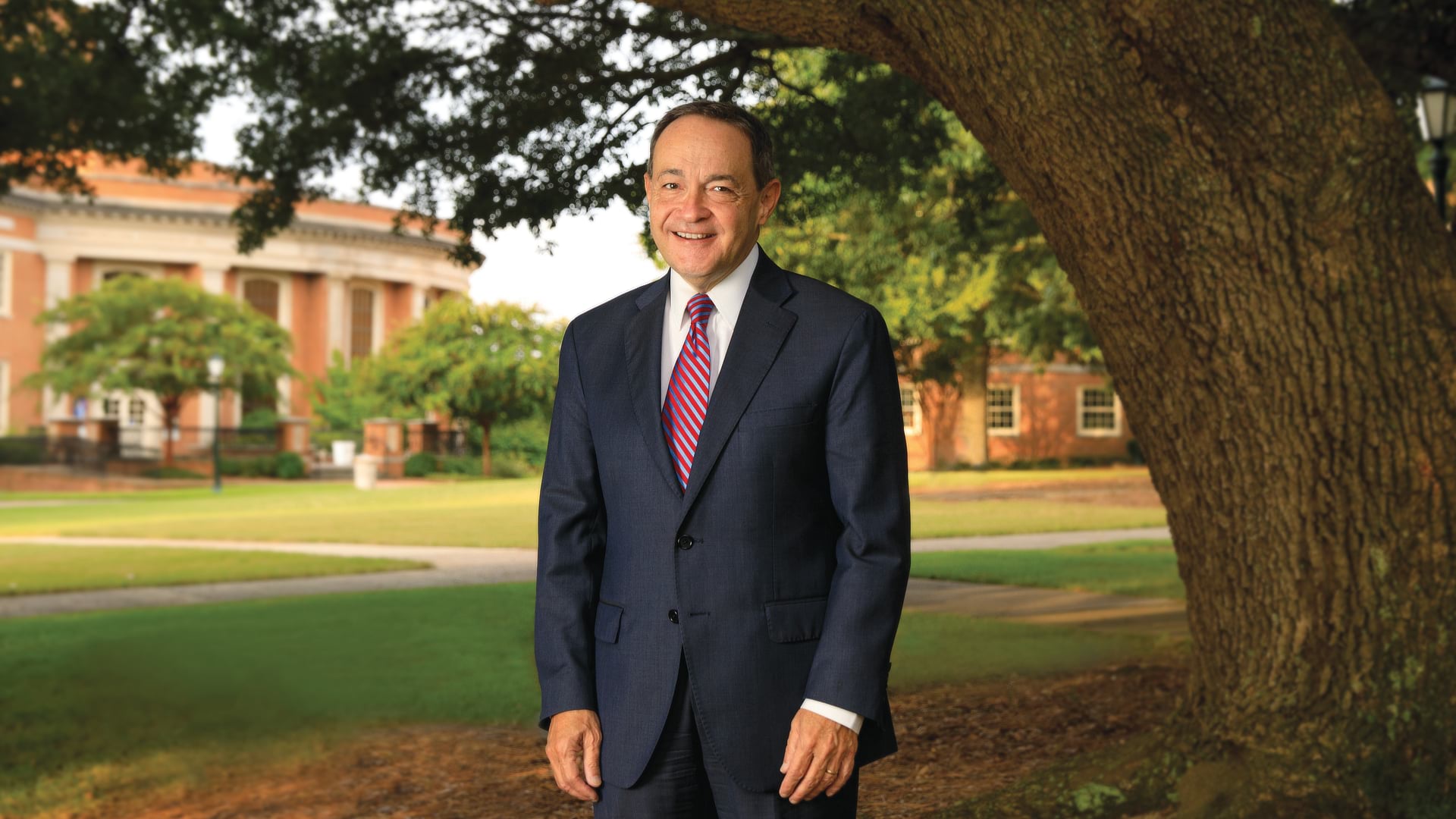He has shared these words at orientations and commencements, in small gatherings and at large ones. And now, as he transitions into retirement, his words become further entwined with his own legacy.
Over the past 15 years, Westmoreland has not only nurtured the trees planted by his predecessors, but he has also planted new ones—creating shade under which future generations will sit and enjoy. His legacy not only tells the story of Samford’s success, but it also reflects his heart for people and for God.
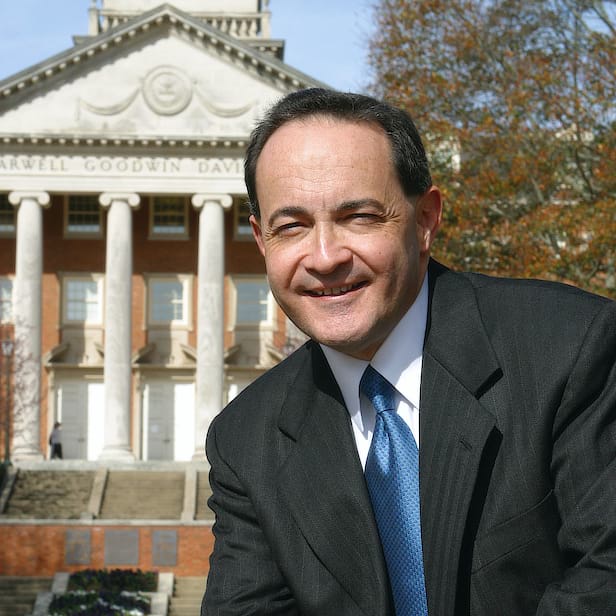
Westmoreland assumes the Samford University presidency on June 1 and begins the practice of sending informational and encouraging email messages to students and employees on the first of each month, a tradition that continues to the present time.
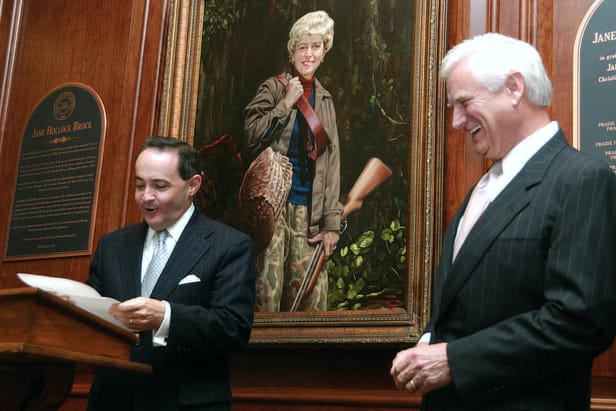
The $9-million Jane Hollock Brock Recital Hall is dedicated with its 300-seat recital hall, a rehearsal suite for Samford orchestral and band programs, and an instrumental teaching center.
Following a $1 million renovation Bonnie Bolding Swearingen Hall is named.
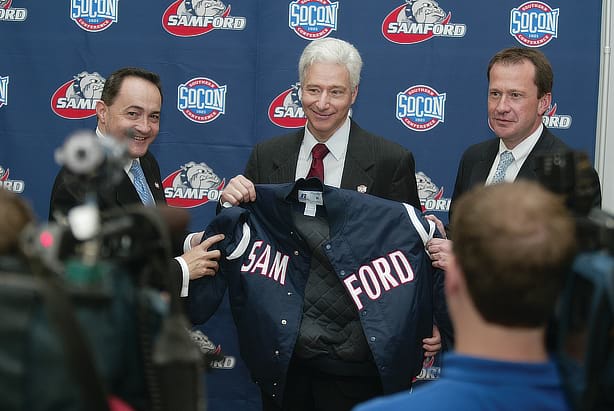
Samford joins the historic Southern Conference, the fifth-oldest Division I athletics conference in the country.
Trustees approve a $12 million fundraising campaign for a new track and field stadium, a new football field house and other athletics-related projects.
The $32-million Pete Hanna Center is dedicated in a series of Homecoming events. The 132,000-square foot multipurpose facility is the largest single building constructed in the 50-year history of Samford's Homewood campus.
The business school is named for longtime Samford trustee and Alabama banking legend Harry B. Brock Jr.
Westmoreland begins sending Monday Mission, a weekly email highlighting a Samford person or program that contributes to fulfilling the university’s distinctive mission.
Samford enrolls its inaugural class of University Fellows to open the university’s honors college experience, offering an interdisciplinary great ideas core curriculum, international study and funding for academic enrichment. Admission to the program remains highly competitive.
Samford acquires the property on Shades Crest Road to become the official Samford University President’s House. Following expansion and renovation the Westmorelands welcome about 10,000 guests to their home each year.
Samford announces the creation of the Frances Marlin Mann Center for Ethics and Leadership, including an endowed professorship.
The $27-million science building is dedicated as William Self Propst Hall, honoring the 1961 Samford graduate who became one of the nation's most successful pharmacy entrepreneurs.
Samford hosts the inaugural Black Alumni and Friends luncheon with about 50 guests. The event has become a highly anticipated annual tradition drawing a crowd of nearly 300 guests. The event is now hosted by Samford’s Black Alumni Association which was formed in 2014.
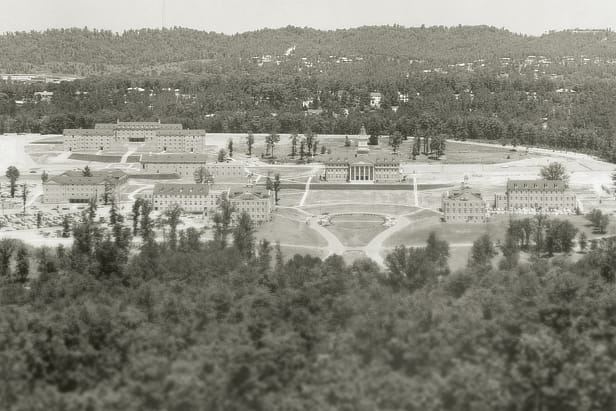
Samford marks the 50th anniversary of the move from Eastlake to Homewood.
Samford processes more than $99 million in student financial aid.
Construction on the West Village residence halls is completed providing housing for 300 students. The J. T. Haywood Field House for baseball and softball is dedicated.
The Board of Trustees approves the creation of the College of Health Sciences to organize two existing schools, Ida Moffett School of Nursing and McWhorter School of Pharmacy with two new schools: the School of Health Professions and the School of Public Health.
Westmoreland begins a two-year term as chair of board of trustees for the Southern Association of Colleges and Schools Commission on Colleges.
Five months ahead of schedule, the university completes the Campaign for Samford announcing a total of $202,542,090 in gifts and pledges from 18,276 different donors, exceeding the original goal of $200 million.
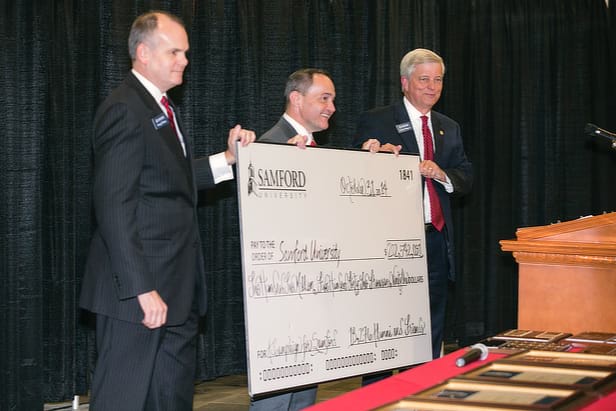
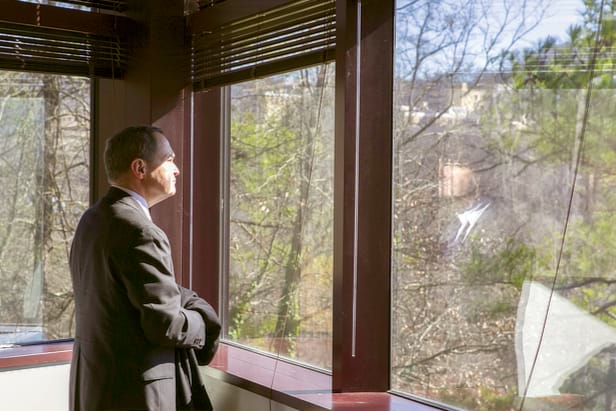
The university completes the largest single expansion of its campus in more than 60 years with the purchase of adjacent property that had served as the headquarters for Southern Progress Corp. since the 1980s. The $58 million sale was finalized Dec. 31, 2014. The 28-acre tract includes nearly 400,000 square feet of space in three buildings and more than 1,000 parking spaces.
Total enrollment tops 5,000 for the first time. In just 24 months, Samford trustees approve 36 new or restructured academic programs in a wide variety of areas to better serve the needs of students.
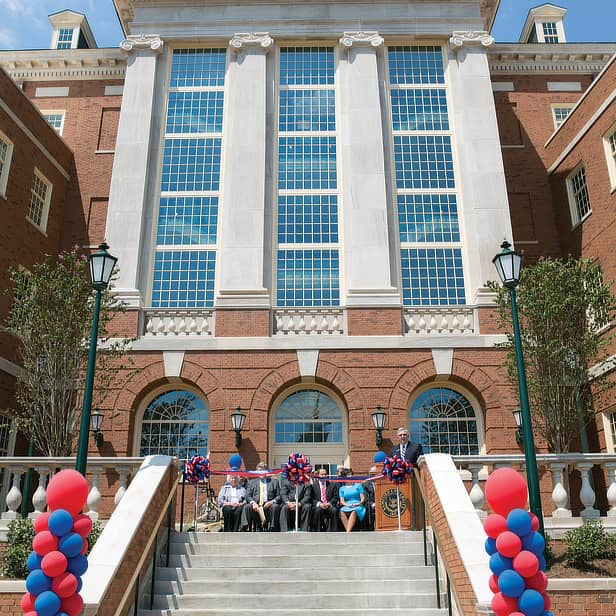
Samford opens several new or remodeled facilities. Along with the new 80,000-square-foot home for Brock School of Business, the university transformed the massive facilities services building on the north side of the campus into the Art Lofts to provide studio space for faculty and students in painting, sculpture, pottery and other visual arts. To enhance the dining choices for our students, the university center cafeteria received extensive remodeling throughout the summer.
The Micah Fellows Program for Christian Service and Community Engagement is established as an honors program designed for students interested in service.
A refreshed brand identity is launched, including a new bulldog logo, new spirit marks and new brand marks for the university’s 10 academic schools. The yearlong branding project engaged over a thousand employees, students and alumni in focus groups and survey research.
Samford marks its 175th anniversary with a yearlong series of celebrations culminating with a convocation on Homecoming weekend where the multi-year $300 million Forever Samford Campaign is launched.
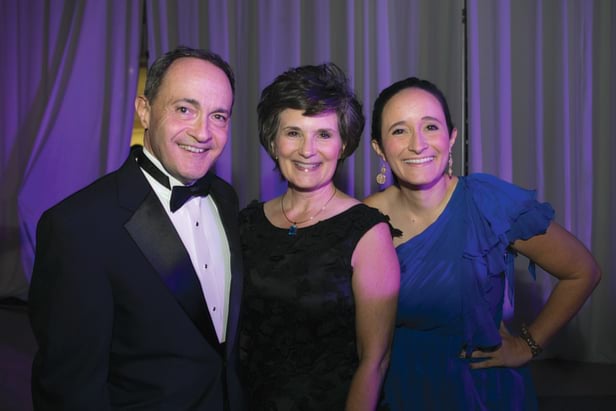
Samford completes the renovation of property acquired in 2014 and dedicates the new College of Health Sciences facility as an innovative teaching and learning environment designed to foster collaboration among students and faculty in more than 30 health sciences programs.
Westmoreland begins First Tuesday prayer and devotional sessions with students.
An economic impact study finds Samford’s annual fiscal and economic impact on Alabama is $424.8 million. Per student, Samford has an impact of $77,646 on the Birmingham economy.
Trustees approve the first major update of Samford’s campus master plan since the university moved to its current location in the 1950s.
Trustees approve an investment of $31 million in a comprehensive plan to address infrastructure needs for the entire campus, increase energy efficiency, practice campus-wide conservation, and refresh and renew every facility on campus.
The Forever Samford campaign surpasses $150 million in gifts and pledges, halfway to the multi-year goal.
Almost $20 million is invested to complete renovations for A. Hamilton Reid Chapel, Percy Pratt Burns Hall, James Horton Chapman Hall, Robert I. Ingalls Sr. Hall, the Beeson Center Rotunda and Rotunda Club and the Daniel House in London.
Due to an expanding range of academic programs, Samford advances in classification by the Carnegie Commission on Higher Education from a regional Master’s University to a national Doctoral/Professional University.
Samford continues a more than decade-long growth pattern exceeding national norms, setting a fall enrollment record for the 11th consecutive year with 5,692 students.
A $20 million renewal of the Ralph Beeson University Center is completed, including a new food court, expanded Samford Shop, student commons, post office, and student life and student affairs spaces.
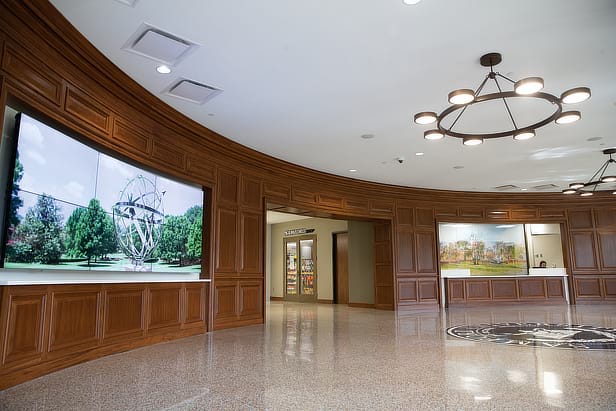
Samford’s athletic teams earned a 97% Graduation Success Rate (GSR) by the NCAA. Samford is ranked 1st in Alabama and 18th in the nation for GSR among all colleges and universities in the NCAA Division 1 level.
Samford is ranked 2nd in the nation for student engagement by the Wall Street Journal. Student engagement assesses how challenged and inspired students feel inside and outside the classroom, as well as the breadth of courses their schools offer.
Across the past 15 years, Samford has added a School of Public Health, a School of Health Professions, and a College of Health Sciences. Today the university provides over 170 undergraduate majors, minors and concentrations and 70 graduate majors, minors and concentrations.
Total enrollment grew more than 23% across undergraduate, graduate and online programs: from 4,478 in the fall of 2006 to an estimated 5,700 in the fall of 2020.
Samford has received near $400 million in cash gifts, current pledges and grants (from both public and private sources). This includes funding for 323 new endowed scholarships.
In the past 14 years Samford University’s net assets have grown by almost 23% to more than $712 million.
Over the past 15 years, female and minority representation on the board of trustees has been a priority, and today they represent a third of all trustees. The number of fulltime minority employees has increased significantly, and the enrollment of minority students has more than doubled.
Samford is regularly recognized as one of the top Christian universities in the United States, receiving high marks for academic quality and value. Samford is the top-ranked university in Alabama in national rankings published by the Wall Street Journal. Additionally, the Wall Street Journal/Times Higher Education ranks Samford 2nd in the nation for student engagement. U.S. News & World Report ranks Samford 40th in the nation for best undergraduate teaching and 100th for best value. Kiplinger’s Personal Finance ranks Samford 34th among private universities in the U.S. for value and affordability. According to the Wall Street Journal/Times Higher Education, Samford students are more likely to recommend their university than students at any other college or university in the country.

